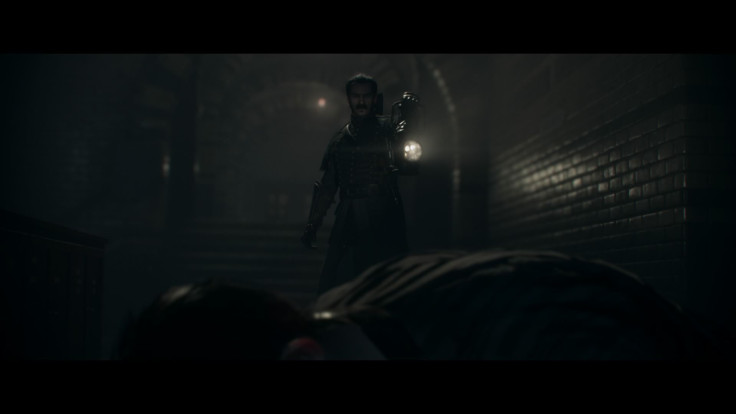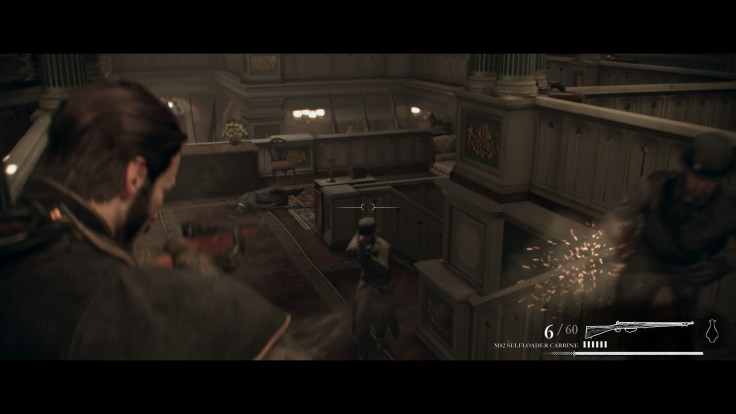The Order: 1886 looks to continue PlayStation’s focus on cinematic, larger-than-life tales of adventure; a path that many of Sony Computer Entertainment’s first-party developers have tried to walk since Uncharted: Drake’s Fortune burst onto the scene back in 2007.
Unfortunately, an over-reliance on QuickTime Events (QTEs), shoddily-designed game mechanics and a story that fails to entertain ultimately keep The Order: 1886 from following in Nathan Drake’s footsteps. Worse, the few truly enjoyable moments are so vastly outnumbered by boring (or just plain bad) content that The Order: 1886 won't even be worth renting to many, much less buying.
Ready At Dawn did an admirable job of world-building; sculpting a slightly-altered London that matches the game’s semi-supernatural setting without crossing into the realm of fantasy. Sweeping views of the city illicit the awe and wonder that you’d hope for from a PS4 game, that’s been in the works for five years, and the moment-to-moment action is some of the best-looking I've seen.
And I’ll even admit to being slightly curious about what comes next; since Ready At Dawn has already confirmed this won’t be the last we hear from the Knights. But the brevity of The Order: 1886 isn’t even the biggest reason why many will be turned off by the game and I suspect those who enjoy The Order: 1886 are destined to be outnumbered (and drowned out) by the voices of those who don’t.
Without getting into spoiler territory, I’ll say the big “twist” in The Order: 1886 won’t generate much more than a “Really…” or “Again?” from anyone vaguely familiar with the subject matter. There’s not necessarily anything wrong or offensive about telling the story that the studio elected to tell. But there’s also not very much original about it, either.

Things start off well enough in The Order: 1886. Like so many modern games and movies, the game opens with our hero in dire straits before spending the bulk of the campaign in an extended flashback that explains exactly how he landed in such a predicament.
The dev team doesn’t waste much time with pleasantries and thrusts players into action much faster than many narrative-focused games. The decision only works because of the studio’s rather masterful dispersal of information and the game’s basis in semi-reality also saves the dev team the trouble of having to explain certain things.
Here’s the gist.
The people assembled around the gigantic, ornate table are Team Good Guys. The ones who transform into scary monsters are Team Bad Guys. An unidentified collective of people rebelling against the queen throw a bit of complexity into the narrative, for a couple of hours, but even they are shoehorned into the supernatural war at the core of The Order: 1886 by the time the credits roll.
Collectibles tell the rest of the story, in the form of readable newspapers, audio diaries and old-timey photographs. Ready At Dawn provides enough information to keep players on-track with current events, and curious about the universe in which The Order: 1886 is set, while forcing players to learn certain things about the world by observing their surroundings.

In this alternate timeline of The Order: 1886, the fabled Knights of the Round Table exist well into the 19th century and have played a strong role in keeping humanity safe over the centuries.
For the most part, Knights are ordinary human beings; save for the ability to consume a liquid substance that triggers a flash-healing process and gives the Knights heightened reflexes in times of great duress. The former occurs at time of consumption while the latter is an ongoing ability –meshing traditional auto-aim mechanics with "bullet time" – that can be triggered by the player.
To make things interesting, The Order: 1886 is set in an alternate timeline where London is both better and worse off on than the real-world locale was at the time. For starters, British companies use zeppelins to transport people and cargo across the Atlantic Ocean; roughly 50 years before Germany’s real-world attempts at normalizing the same practice yielded the Hindenburg disaster.
In a move right out of Assassin’s Creed, The Order: 1886 also pairs players with one of the most-influential people in the history of mankind; dropping famed inventor Nikola Tesla into 19th-century London alongside Sir Galahad and the Knights of the Round Table.
Naturally, counting one of the world's most-brilliant inventors among their ranks has some clear benefits for the Knights, including access to a small collection of incredibly powerful firearms. My personal favorite is the Arc Rifle; a weapon that uses bolts of electricity to quickly subdue an attacker. Best of all, the electrical charge you generate will automatically jump to the closest exposed enemy, making the Arc Rifle an excellent weapon to use when firing from cover.
There's also a thermite rifle, which can be used to set one or more enemies ablaze, along with the usual assortment of machine guns, high-powered rifles and half-a-dozen or so hand cannons that come in all manner of shapes and sizes. Ready At Dawn does an admirable job of rotating Galahad's armaments in and out of action, frequently giving players the ability to switch between a substantial percentage of the game's armory in any given gunfight.

If only the story at the heart of The Order: 1886 had been half as engaging as the world that plays host to Ready At Dawn's latest adventure then people might be talking about the PS4 exclusive with more fondness. But the game is boring. To be quite frank, I'm not sure I'd have finished The Order: 1886 if reviewing video games wasn't my job.
Rehashed boss battles -- that weren't even good the first time -- aren't the sort of thing that make gamers want to revisit your game/series. Neither are uninspired dialogue, unoriginal plot lines, uninteresting characters, shoddy stealth mechanics, inordinate amounts of QTEs and/or any number of other truly terrible design decisions on display in The Order: 1886.
I’ll give the studio its props for not displaying a visibility meter during the game's stealth segments but that small victory does nothing to offset the tediousness that players will face in The Order: 1886. It doesn't even offset the anger I have over Ready At Dawn becoming the latest in a long line of developers who insist on cramming half-assed stealth gameplay into a game that doesn't need it.
Had the game’s story been a bit more thrilling, the prospect of repeatedly trying to cross a courtyard or catwalk without being spotted might’ve been a bit more enticing. Instead, I found myself increasingly frustrated with the lack of audio/visual cues of guards that clearly would’ve made their presence known to Galahad before stepping into the camera’s view.

Gameplay frustrations aren’t limited to human enemies, either. Particularly when it comes to the lycans, and their half-breed brethren; a hoard of enemies that are both criminally underutilized and shockingly uninteresting on the half-dozen occasions when you’re actually forced to fight them.
Ready At Dawn absolutely delivers the goods when it comes to the look and sound of these monstrous creatures. Watching humans transform can be startling, at first, and modern gaming hardware has enabled the sort of life-like animations needed to communicate the lycans’ power via actions instead of words.
There were multiple occasions when I flinched watching Galahad be thrown through/against an obstacle, in part because bodies crumple in such a realistic fashion throughout The Order: 1886. Rag doll physics actually add quite a bit to the experience in The Order: 1886.
But every bit of that awe that disappeared within minutes of my first lycan encounter, when I realized that the best ideas Ready At Dawn could come up with were extended counter and shooting gallery sequences that would have felt more appropriate in a Telltale project than a triple-A, PS4 exclusive.

The Order: 1886 Review – Final Verdict
Pre-launch, the conversation may have surrounded the length of The Order: 1886’s campaign – which I finished in around 8.5 hours – but that’s because the general public wasn’t yet aware of just how much ground Ready At Dawn would be retreading.
Truth be told, brevity wouldn't even rank on a list of the five biggest problems with the game.
The Order: 1886 looks and sound fantastic; easily on-par with the best games currently available (or even announced) for the latest generation of video game hardware. There are moments when the images on-screen are so life-like that it takes a return to gameplay to remind me that I’m not actually watching a movie. Not necessarily a good movie, mind you, but a movie nonetheless.
But The Order: 1886's biggest issue is balance. Ready At Dawn may have found a working formula for informing players about the world the game is set in, but they failed (quite spectacularly) when it comes to balancing the amount of time that players spend on various tasks.
Far too often, I find myself forced to repeat sections of The Order: 1886 that I didn’t enjoy the first time, much less the second, third or (in one case) seventh viewing. And that goes double for the monotonous lycan encounters that Ready At Dawn couldn’t be bothered to spruce up before shipping the game. That same lack of balance is also evident throughout the game's campaign, as players bounce back and forth between lengthy (but non-life-threatening) gun fights and one-button QuickTime Events that fail to offer any semblance of joy or entertainment.
I have little doubt that Sir Galahad will join a pantheon of iconic PlayStation heroes that includes Crash Bandicoot, Kratos and many others. But it's going to take at least one more adventure, and a damned good one at that, before many gamers look back on The Order: 1886 with any sort of fondness.
Score – 2/5
What did you think of The Order: 1886? Can't believe Scott only gave the game two stars? Think our The Order: 1886 review was too generous?
Let us know in the comments section!


















